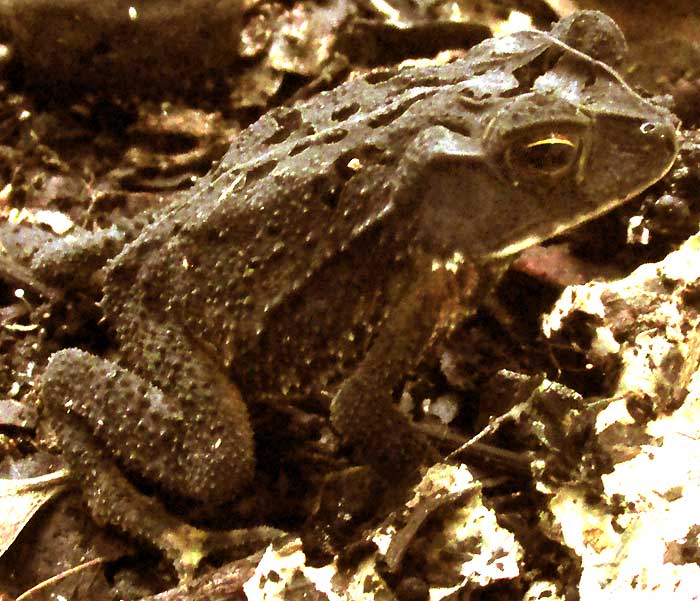Excerpts from Jim Conrad's
Naturalist Newsletter
Entry with material from an October 1, 2019 field trip in El Rosario National Park on the east side of Sayaxché, Petén, GUATEMALA
CAMPBELL'S FOREST TOAD
During a walk along a trail between park headquarters and the old sawmill, the toad shown below hopped across my path:

This was in deep forest with lots of Cohune Palm, soggy here during the late rainy season, and light was dim. I thought it was another Gulf Coast Toad, but something didn't seem quite right, so I just took a snapshot to confirm that it was nothing special. Once the picture was on the laptop screen, I could have kicked myself for not having gotten down in the mud and taken time exposures showing important details, such as the size of the tympanum, which is described as much smaller than that of the similar Gulf Coast Toad. Even our picture shows the lines of distinctive, sharp tubercles running along its sides and back. This was the Campbell's Forest Toad, INCILIUS CAMPBELLI, in the old days known as Bufo campbelli.
Campbell's Forest Toad, also known as Campbell's Rainforest Toad, is endemic just to eastern Chiapas in Mexico, Guatemala, western Honduras, and the Maya Mountains of Belize. It was recognized as a distinct species only in 1994. Unlike Gulf Coast Toads, which turn up in disturbed and revegetating areas, Campbell's Forest Toad keeps to moist to wet lowland or foothill forests and pristine mountain slopes. This part of the Petén is lowland and fairly flat, but the local area where I was walking was on a slope leading down to the lake forming the heart of El Rosario National Park. The species is considered to be "near threatened."
Julian Campbell -- for whom I bet the toad to have been named -- in his 1998 Amphibians and Reptiles of Northern Guatemala, the Yucatán, and Belize remarks that this species is suspected to breed in flowing streams. In this area there were no such streams. The only water other than that which pooled in tree cavities and such was the lake just below us.